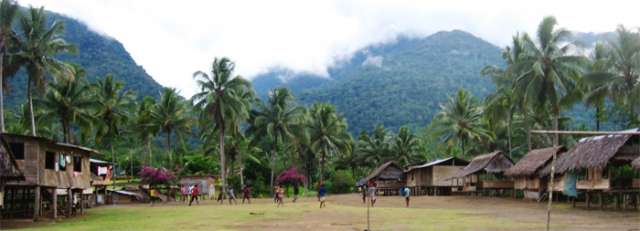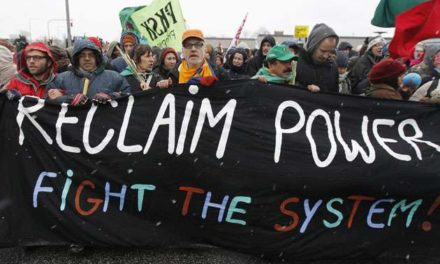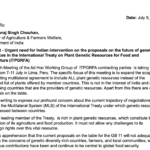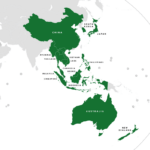To: José Graziano da Silva, General Director of the United Nations Food and Agriculture Organization (FAO) March 21, 2014
We are a broad group of social movements, NGOs and activists, writing this urgent appeal for FAO to review its present definition of forests. FAO´s definition as it stands reduces a forest to any area covered by trees, discarding the structural, functional and biological diversity of non-tree elements that make up a forest, as well as the cultural importance of the interaction between forests and communities . This FAO definition mainly benefits the interests of the timber lobby and the industrial tree plantation companies for pulp/paper and rubber. The definition fails the at least 300 million women and men worldwide who, according to FAO, directly depend on forests for their livelihoods. These include indigenous and traditional peoples and populations, many of whom are peasants whose food sovereignty depends on practicing agriculture in the forest, complemented by their use of a rich diversity of non-timber forest products. They all not only guarantee their own food sovereignty, they make crucial contributions to feeding the world. Forests play a fundamental role in the lives of these women and men, including peasants, artisans, fisher folk and gatherers, and they must be among the main actors in a review process that FAO should initiate to ensure the organization`s definition of forests reflects how forests are seen in the 21stcentury.
Forests have such an importance in the lives of millions of people, women and men, who worldwide depend on forests in a variety of ways, they often find it difficult to express in words how crucial forests are for them, even in their own language. Sometimes, forest peoples summarize this importance through calling the forest simply their “home”- not just a piece of land covered by trees but a territory where they feel protected and where they can find what they need to live well. These people are often indigenous peoples, including the last remaining about 100 groups of peoples living in isolation. They also include many other forest-dependent groups with a rich diversity of ways of living. Without exception, they show great respect towards the forest on which they depend and feel part of.
While the collection of non-timber forest products is an essential activity for many of the forest-dependent women and men, they are also peasants practicing agriculture with methods transmitted over many generations that have been refined in a way so as to maintain forest functions intact. This form of agriculture, together with fishing and hunting, as well as the collection of a range of non-timber products like honey, fruit, seeds, acorns, tubers, medicinal plants, herbs guarantees the food sovereignty and health of these populations. Peasants further contribute to the livelihoods of an even higher number of people, 1.6 billion according to FAO’s own estimate. Also, timber is used by forest peoples mainly for local domestic needs and rarely as a main commercial activity. But if the latter is the case, the trade is mainly done in local markets. Forest-dependent communities are often well aware of the destructive potential of commercial timber extraction. It often results in huge profits for a few outsiders but leaves behind irreparable destruction and severely affects people´s livelihood.
But states and multilateral institutions like FAO and the World Bank still see forests as land where the commercial extraction of valuable timber by private, often foreign companies, is the best way for countries to get on the so called “development” track and take people out of “poverty”. This timber-centric perspective is at the root of the present FAO definition of forests: “Land with tree crown cover (or equivalent stocking level) of more than 10 percent and area of more than 0.5 hectares (ha). The trees should be able to reach a minimum height of 5 meters (m) at maturity in situ(…)”. (1)
This reductionist definition also justifies the expansion of large-scale monoculture tree plantations as so called “planted forests. Under FAO´s definition, such large-scale monocultures are even considered “reforestation” and are said to compensate for forest loss. In practice, industrial tree plantations and other industrial monocultures like oil palm and soy have contributed immensely to the destruction of forests and other biomes like grasslands and savannas throughout the world. While providing a handful of transnational companies with enormous profits, they have left forest-dependent communities impoverished, often even driven them out their territories. Women, with their specific relation with the forest, tend to suffer most from forest destruction. Communities affected by large-scale monoculture tree plantations never call them forests.
FAO’s “state of the world´s forests” report continues to spread the myth that deforestation is less of a problem than it was in the past. The supposedly positive news is the result of FAO confusing forests and plantations, permitting that tens of millions of industrial fast-growing monoculture plantations of eucalyptus, acacia and rubber are counted as “planted forests” in countries’ forest statistics. Under FAO’s present forest definition, even a genetically modified fast-growing eucalyptus plantation of 100,000 hectares is called a “forest”, in spite of all the negative impact it has as a large-scale monoculture crop, not to speak of the risk of contaminating the genetic composition of surrounding trees and forests.
In its founding principles, FAO portraits itself as an organization leading “international efforts to defeat hunger”, as well as being a “neutral forum where all nations meet as equals”. For this claim to become true, FAO needs to urgently revise its forest definition from one that reflects the preferences and perspectives of the timber, pulp/paper and rubber companies to one that reflects how forest dependent peoples see and use forests.
In contrast to the existing process within FAO, a process of elaborating a new and more appropriate definition of forests must effectively engage those women and men who directly depend on forests. An appropriate forest definition must support their modes of living, their networks and organizations. On the International Day of Forests we commit to continue the campaign to move the FAO and all concerned institutions to initiate a process led by forest communities to formulate a new definition of forest.
(1)http://www.fao.org/docrep/006/ad665e/ad665e06.htm
Signed by:
La Via Campesina
Friends of the Earth International
Focus on the Global South
World Rainforest Movement









